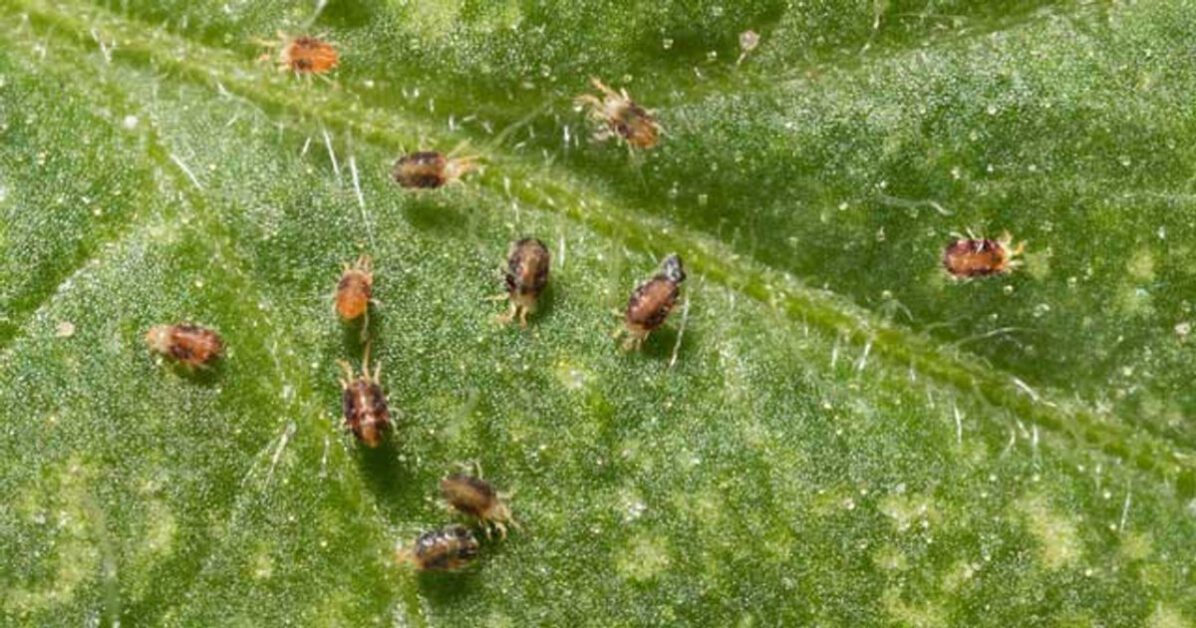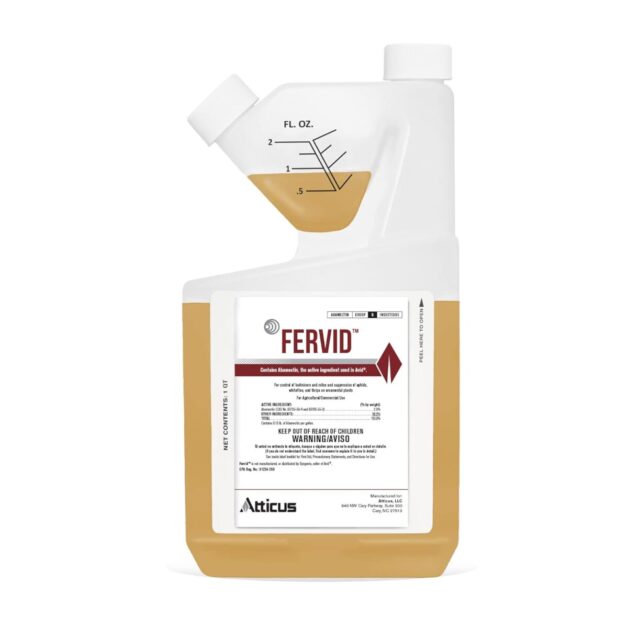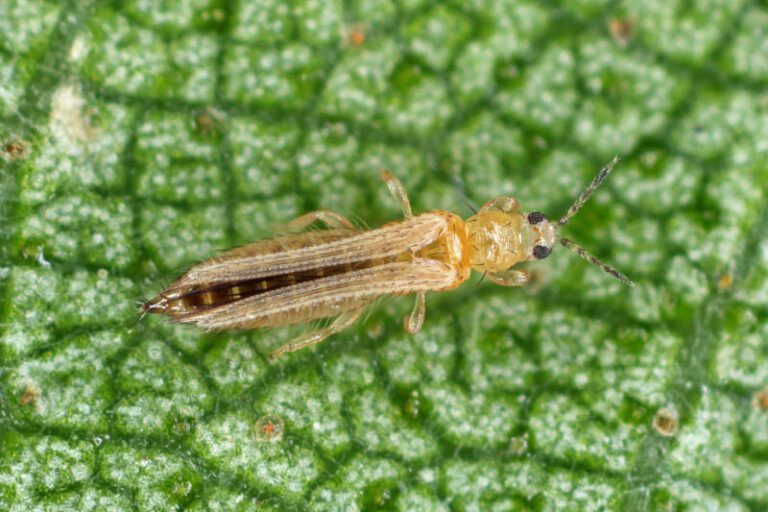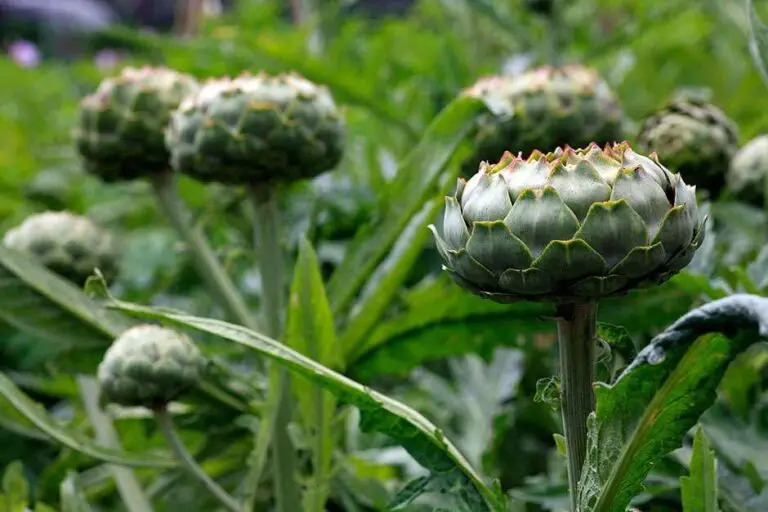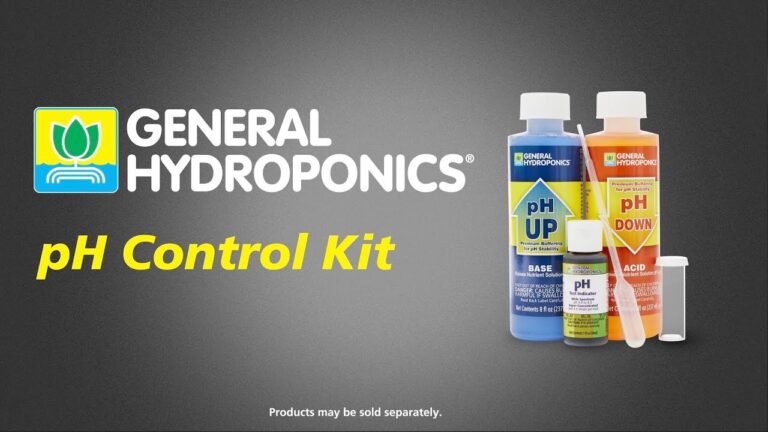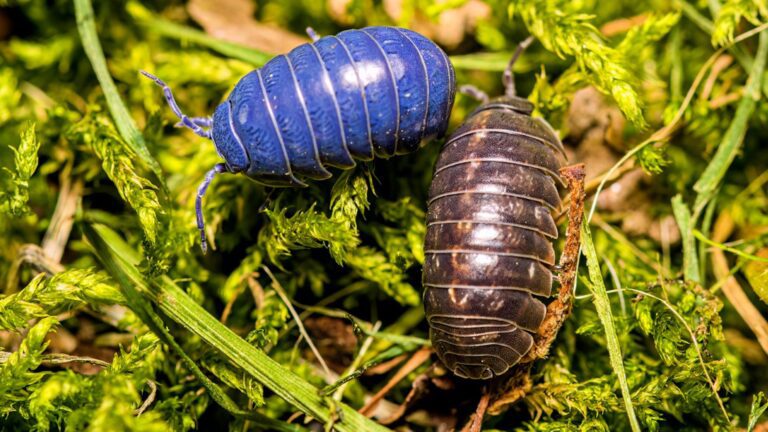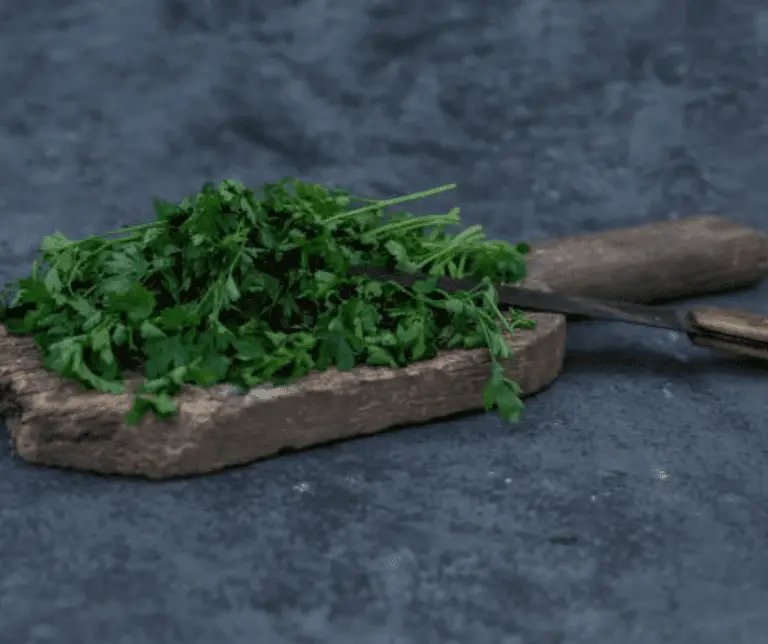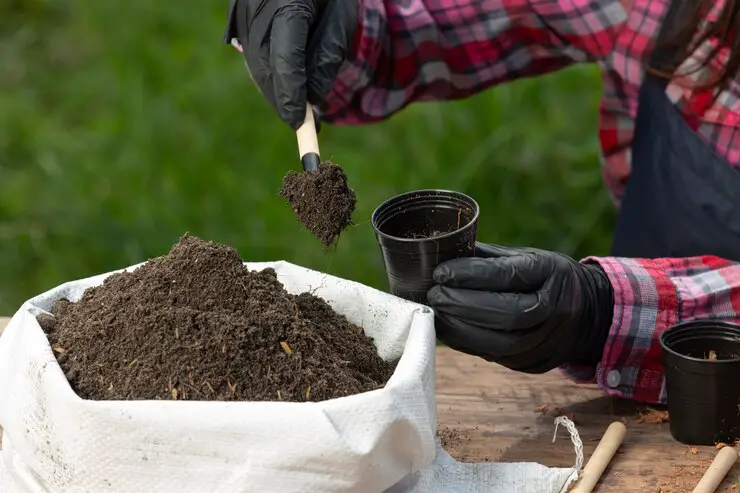Spider Mites: How to Spot and Wipe Them Out from Your Garden
Did you know that tiny spider mites can wreak havoc on your garden, leaving behind a trail of destruction? But fear not, fellow gardeners, for we’re here to arm you with the knowledge and tools to spot these sneaky critters and kick them to the curb! From their elusive hiding spots to the telltale signs of their presence, we’ll cover everything you need to know to reclaim your garden from these minuscule marauders. So, grab your magnifying glass and join us on a journey to eradicate spider mites and restore your garden to its former glory. Let’s show those pesky pests who’s boss!
Table of Contents
Identifying the Presence of Harmful Pests in Your Garden
Gardening enthusiasts know all too well the frustration of harmful pests wreaking havoc in their beloved gardens. These pests not only pose a threat to the health and productivity of our plants, but they can also be a nuisance to our overall gardening experience. Therefore, it is crucial to identify the presence of these pests early on to effectively address and mitigate their impact on our gardens.

- Regular Inspection:
- Observe your plants frequently: Regularly check your plants for any signs of damage or unusual growth patterns. Look closely at leaves, stems, and flowers.
- Look for specific symptoms: Keep an eye out for chewed leaves, wilting, stunted growth, or discoloration. These can be indicators of pest activity.
- Inspect the undersides of leaves: Many pests, such as aphids and spider mites, hide on the undersides of leaves. Gently lift the leaves to check for any pests or eggs.
- Learn About Common Pests:
- Research local pests: Understand which pests are prevalent in your region. Learn about their appearance, life cycles, and feeding habits.
- Know their characteristics: Familiarize yourself with specific traits of common pests. For example:
- Spider mites: Look for fine webs on leaves.
- Caterpillars: Check for frass (droppings) or chewed leaves.
- Aphids: Look for clusters of tiny insects on new growth.
- Whiteflies: Watch for small, white insects flying around plants.
- Early Intervention:
- Act promptly: If you spot any signs of pests, take action immediately. Early intervention prevents infestations from spreading.
- Natural predators: Encourage beneficial insects like ladybugs, lacewings, and parasitic wasps. They help control pest populations.
- Preventive Measures:
- Companion planting: Grow pest-repellent plants alongside susceptible ones.
- Physical barriers: Use row covers or netting to protect plants from flying insects.
- Healthy soil: Well-nourished plants are more resilient to pests.
- Rotate crops: Avoid planting the same species in the same spot year after year.
- Sustainable Pest Control:
- Neem oil: A natural insecticide that disrupts pests’ feeding and growth.
- Diatomaceous earth: A fine powder that damages pests’ exoskeletons.
- Beneficial nematodes: These microscopic organisms attack soil-dwelling pests.
- Hand-picking: Remove pests manually when possible.
So, let us delve deeper into the characteristics of common garden pests and understand how to recognize their presence in our flourishing gardens.
The Garden Safe Crawling Insect Killer with Diatomaceous Earth proved to be a reliable solution for tackling crawling pests in my home. Its natural formula effectively targeted ants, cockroaches, and fleas without posing any harm to my family or pets. While its application required caution due to dustiness, its long-lasting protection and eco-friendly nature made it a worthwhile addition to my pest control arsenal. Overall, it’s a convenient and effective option for keeping crawling insects at bay.
- Natural Pest Control: Utilizes diatomaceous earth, a natural substance, to effectively control crawling insects such as ants, cockroaches, and fleas.
- Long-Lasting Protection: Provides long-term pest control when applied in cracks, crevices, and other hiding spots where insects are active.
- Safe for Use: Non-toxic to humans and pets when used as directed, making it suitable for indoor and outdoor applications.
- Easy Application: Comes in a convenient powder form that can be easily sprinkled or applied with a duster, offering hassle-free use.
- Versatile: Can be used in various areas including homes, gardens, basements, and pet areas to target a wide range of crawling pests.
- Environmentally Friendly: Does not contain harmful chemicals, making it an eco-friendly option for pest control.
- Dustiness: The powder form may create dust when applied, which can be messy and irritating if inhaled, requiring caution during application.
- Slow Acting: Takes time to work and may require several days to eliminate pests completely, necessitating patience from users.
- Effectiveness in Humid Conditions: May lose effectiveness in humid environments as the diatomaceous earth absorbs moisture, reducing its ability to control pests.
- Limited Effectiveness on Flying Insects: Not effective against flying insects such as mosquitoes and flies, requiring alternative control methods for these pests.
- Reapplication Needed: May need to be reapplied periodically, especially in outdoor areas, to maintain pest control effectiveness.
- Potential Harm to Beneficial Insects: While targeting pests, diatomaceous earth may also harm beneficial insects if applied indiscriminately, necessitating careful application to minimize collateral damage.
Understanding the Characteristics of Common Garden Pests
Garden pests can cause significant damage to your plants if left unchecked. Understanding the characteristics of common garden pests is vital for effective pest management. By familiarizing yourself with these pests and their traits, you can better identify and address any infestations in your garden.
aphid
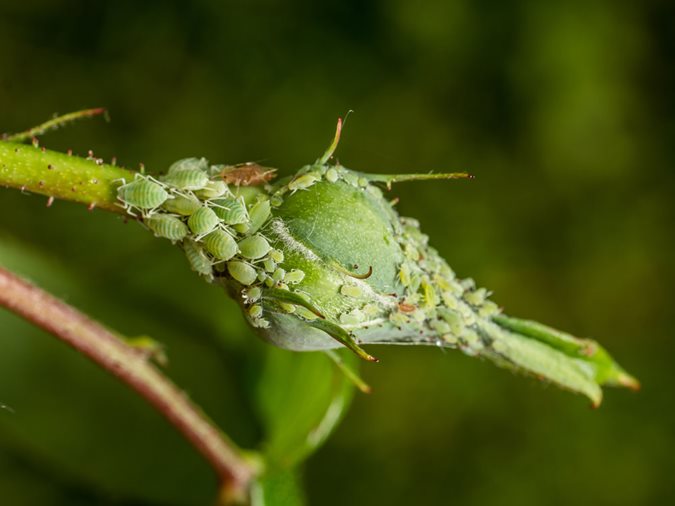
One common garden pest is the aphid. These small, pear-shaped insects are typically found on the undersides of leaves and feed on the sap of plants. Aphids can reproduce quickly, leading to large populations in a short time, and they are known to transmit plant viruses. Signs of aphid infestation include distorted or curling leaves, sticky honeydew residue, and the presence of ants, which are attracted to the aphids’ sweet secretions.
caterpillar
Another common garden pest is the caterpillar. While butterflies and moths may be beautiful, their larval stage can wreak havoc on garden plants. Caterpillars have chewing mouthparts and can quickly devour foliage, leaving behind ragged, eaten leaves. Some caterpillars, such as the tomato hornworm, are particularly voracious feeders and can consume entire plants if not controlled. Identifying and removing caterpillars, as well as implementing measures to deter their presence, is crucial for protecting your garden.
The Impact of Spider Mites on Your Garden’s Health and Productivity
Spider mites, despite their small size, can have a devastating impact on the health and productivity of your garden. These tiny arachnids are common pests that feed on the sap of plants, causing significant damage.
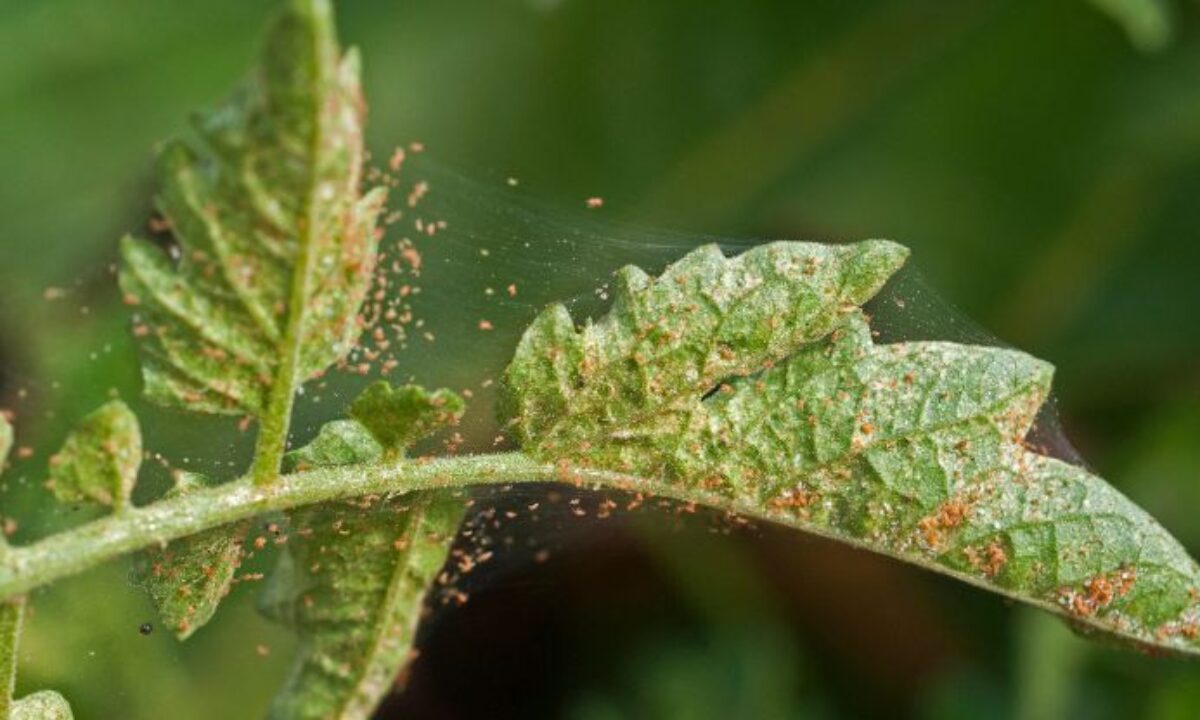
Spider mites feed by piercing plant tissue, causing stunted growth, discoloration, and even plant death.
Their tiny size allows them to go unnoticed until significant damage occurs.
Each female spider mite can lay hundreds of eggs within weeks.
Infestations can escalate swiftly, affecting multiple plants.
Infested plants become weakened and vulnerable.
Increased susceptibility to other pests and diseases.
As infestations progress, leaves may be covered in fine silk webbing.
Webbing hinders photosynthesis and nutrients absorption.
Spider mite damage leads to reduced crop yields and poor quality.
Crop failure is possible if left unaddressed.
Spider mites can harm beneficial insects, disrupting the garden ecosystem.
The following table explains about the impact of spider mites on garden health and productivity:
| Aspect | Impact Level | Quantitative Impact |
|---|---|---|
| 1. Plant Damage | – Moderate to Severe | – Up to 30% reduction in yield. |
| 2. Growth Stunting | – Moderate | – 10-20% decrease in plant growth. |
| 3. Leaf Discoloration | – Moderate | – 15-25% reduction in chlorophyll production. |
| 4. Reduced Photosynthesis | – Moderate | – 20-25% decrease in photosynthetic activity. |
| 5. Decreased Fruit Quality | – Moderate to Severe | – 15-30% decline in fruit quality. |
| 6. Spread of Viruses | – Moderate to Severe | – Risk of viral infections increases by 20-30%. |
| 7. Increased Stress on Plants | – High | – 30-40% increase in plant stress. |
| 8. Decreased Overall Productivity | – High | – Up to 40% reduction in overall garden productivity. |
Examining the Signs and Symptoms of Spider Mite Infestation
Signs and symptoms of a spider mite infestation can vary depending on the severity and duration of the problem.
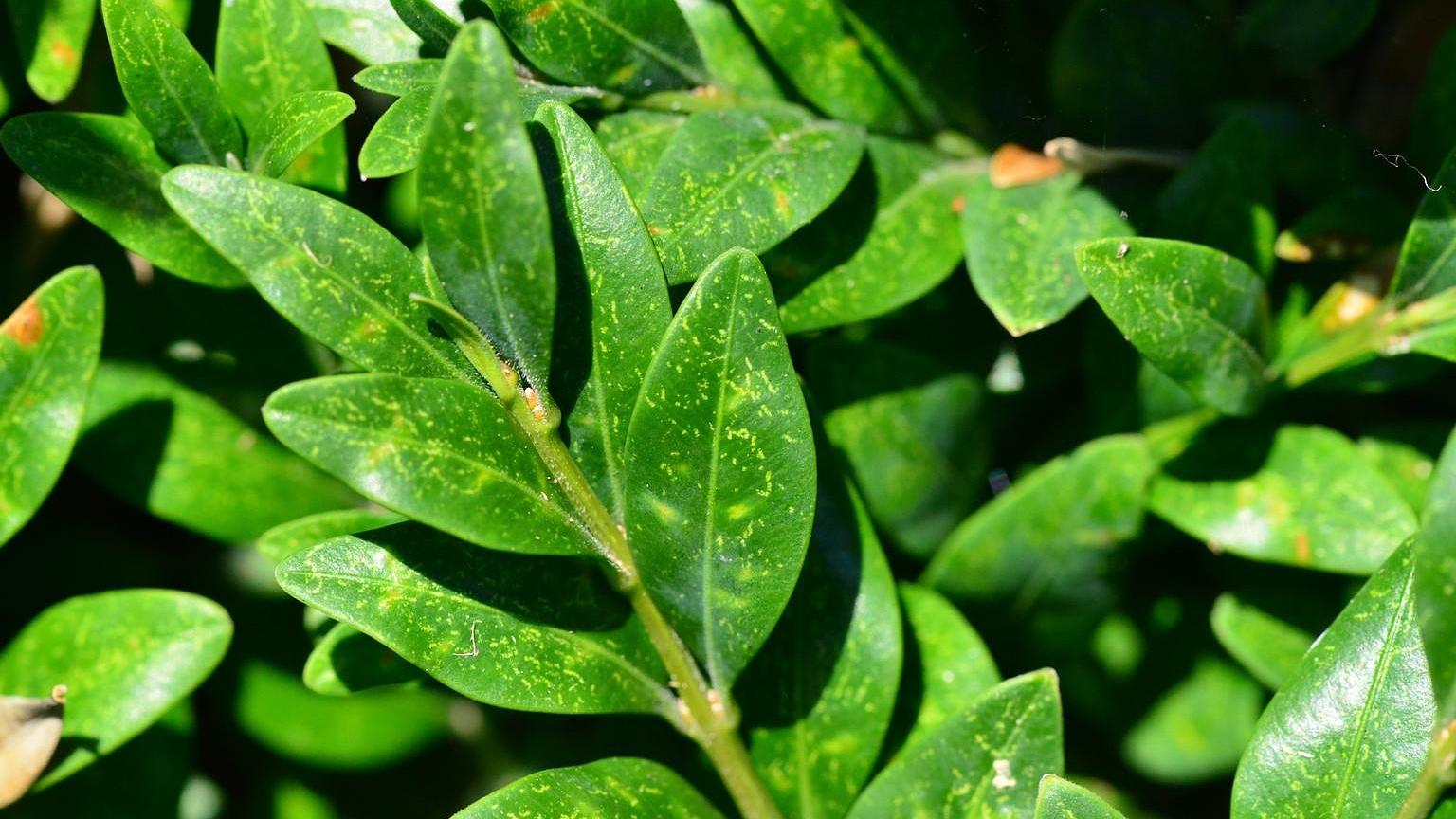
- Check for Webbing: Look for fine webbing on the undersides of leaves, between branches, and along the stem of the plant. This webbing serves as a protective shelter for the spider mites and their eggs.
- Inspect for Stippling: Examine the leaves for tiny white or yellow spots, which are a result of the spider mites feeding on the plant’s sap. These spots often require a hand lens to see.
- Monitor Leaf Discoloration: Keep an eye out for yellowing or discoloration of the leaves, which can be a sign of spider mite damage. This discoloration can spread to other parts of the plant if left unchecked.
- Observe New Growth: Check for stunted or misshapen new growth, which can be a sign of spider mite damage.
- Identify the Pest: Familiarize yourself with the appearance of spider mites. They are tiny, about 1/50 of an inch long, with eight legs and spherical bodies bearing two dark spots.
- Understand Spider Mite Damage: Spider mites damage foliage by interrupting the flow of nutrients and production of chlorophyll. This can lead to holes in the foliage, yellowing and dropping off of leaves, and extensive webbing.
- Take Immediate Action: If you notice any signs of spider mites, isolate the infected plant, keep it well-hydrated, and remove any webbing. Use a miticide specifically designed to kill mites or horticultural oil to treat the plant.
- Prevent Future Infestations: Keep your plants well-hydrated and free from dust, as spider mites thrive in hot, dry conditions. Regularly inspect your plants for signs of spider mites, especially during hot, dry months.
- Consider Professional Help: If the infestation is severe or spread to multiple plants, consider seeking help from a professional lawn care service that offers spider mite control.
Observing the Physical Appearance of Spider Mites
Spider mites are tiny arachnids that belong to the Tetranychidae family, commonly known as plant pests. While they may be small in size, their damage to garden plants can be devastating. To effectively identify spider mites in your garden, it is crucial to understand their physical appearance.
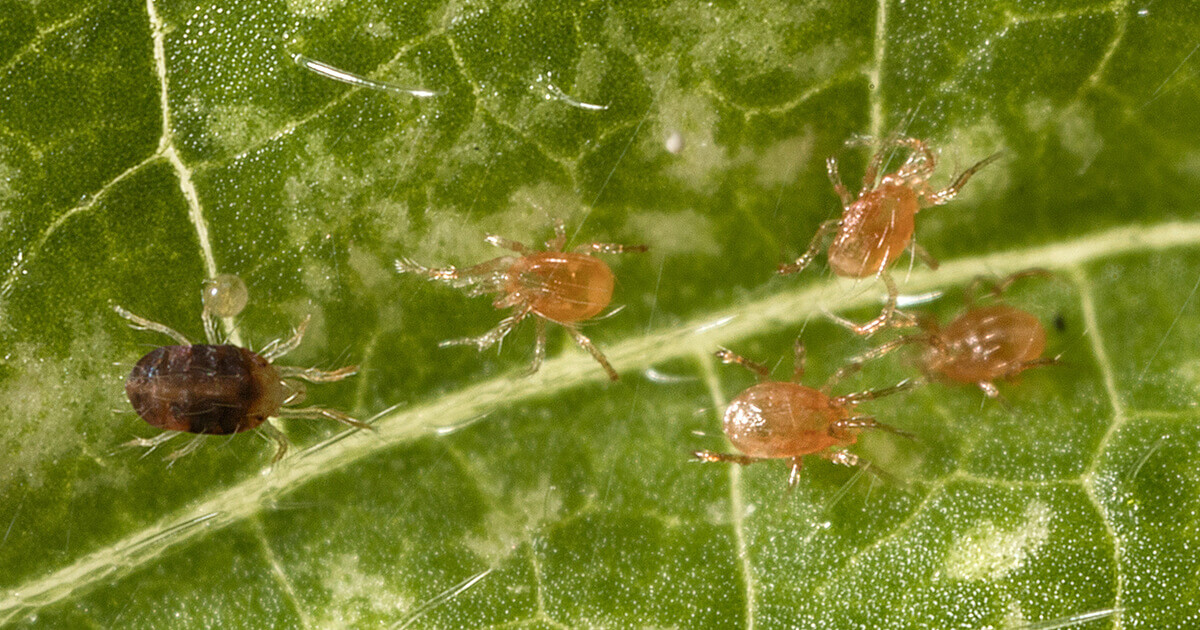
- Observation: Carefully examine your plants, especially the undersides of leaves. Use a magnifying glass if needed.
- Look for Tiny Specks: Spider mites are tiny, often less than 1mm in size. They may appear as tiny specks moving on the leaves.
- Check for Color Variation:
- Adults: Adult spider mites can be green, red, or yellow.
- Juveniles: Younger spider mites are usually translucent or pale.
- Inspect for Webbing: Spider mites create fine silk webbing on plants. If you see webbing, it’s a sign of a severe infestation.
Understanding the physical appearance of spider mites is crucial for early detection and prompt action. By regularly monitoring your garden plants and identifying these tiny pests, you can take the necessary steps to prevent their infestation from causing significant harm.
Recognizing the Damage Caused by Spider Mites to Garden Plants
Spider mites, small arachnids that belong to the family Tetranychidae, are notorious pests that can wreak havoc on your garden plants. These tiny pests, measuring only about 0.5 millimeters in length, may seem harmless at first glance. However, their voracious feeding habits and rapid reproduction rates can quickly lead to significant damage if left unchecked.
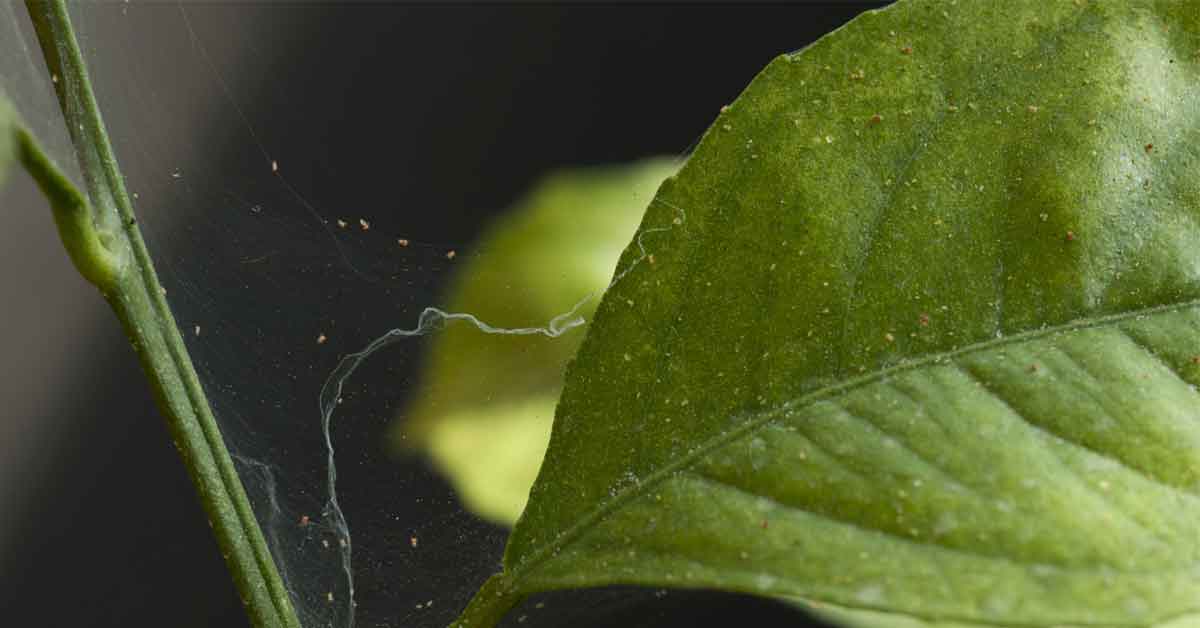
- One of the initial signs of spider mite infestation is the appearance of tiny yellow, brown, or white spots on the leaves of your plants.
- These spots, known as stippling, occur as a result of the mites puncturing the plant cells and sucking out their contents.
- Over time, the stippling may become more pronounced and widespread, giving the leaves a speckled or bronzed appearance.
- In severe cases, the entire leaf may turn yellow, dry out, and eventually die.
- In addition to the visual damage caused by stippling, spider mites also produce webbing, which serves as a protective shelter for them.
- If you notice fine silk-like strands covering your plants, especially in areas with concentrated feeding activity, it is a strong indication of spider mite presence.
- The webbing not only shields the mites from predators but also hampers the photosynthetic ability of the affected leaves, further weakening the plants.
Strategies for Preventing Spider Mite Infestations in Your Garden
Spider mites can wreak havoc on your garden plants, causing damage and reducing their health and productivity. To prevent spider mite infestations in your garden, it is crucial to implement effective strategies that discourage these tiny pests from taking hold.
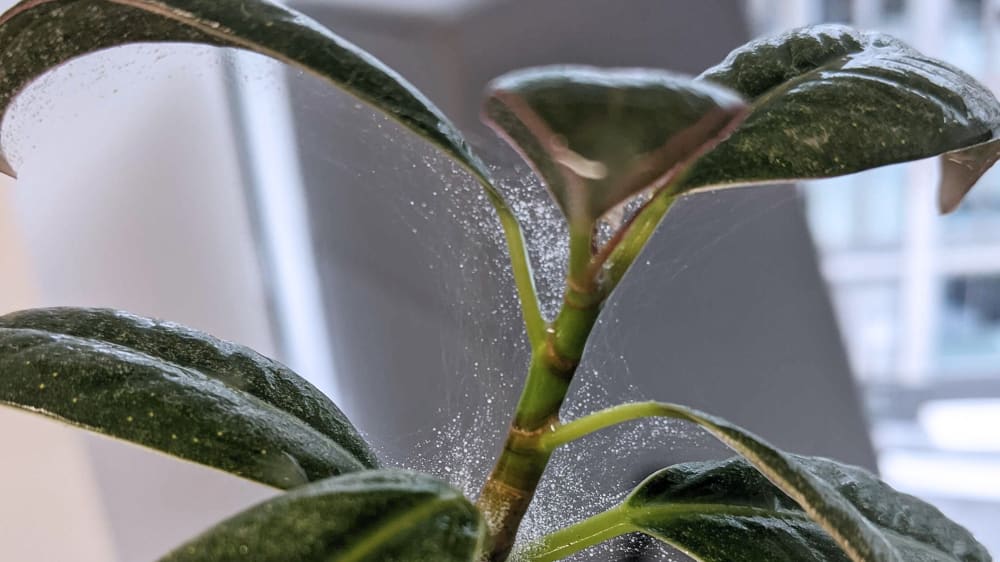
Regularly water plants to maintain moisture levels and deter spider mites, which thrive in dry conditions.
Keep foliage clean and free from dust by gently wiping leaves with a damp cloth or using a gentle spray of water.
Ensure adequate spacing between plants to prevent overcrowding, minimizing hiding and breeding spots for spider mites.
Promptly remove and dispose of any infested or damaged plant material to prevent spider mite spread.
Clear weeds and unwanted vegetation surrounding the garden to eliminate alternative hosts for spider mites, reducing the risk of infestation.
The following table explains about the strategies for preventing spider mite infestations in your garden:
| Preventive Strategy | Application Frequency | Effectiveness Rating (1-5) | Time Investment (hours/week) | Economic Impact |
|---|---|---|---|---|
| 1. Regular Inspection | – Weekly | 4 | 1-2 | Low (Minimal cost for inspection) |
| 2. Water Spraying | – Bi-weekly | 3 | 1 | Low (Water usage cost) |
| 3. Beneficial Insects | – Monthly | 5 | 2-3 | Moderate (Purchase of insects) |
| 4. Neem Oil Spray | – Bi-weekly | 4 | 1-2 | Low (Cost of neem oil) |
| 5. Pruning Infested Leaves | – As needed | 2 | 1 | Low (Minimal tools needed) |
Taking preventive measures such as these can greatly reduce the chances of a spider mite infestation in your garden. However, it is important to stay vigilant and regularly inspect your plants for any early signs of spider mite activity. By incorporating these strategies into your gardening routine, you can ensure a healthier and more vibrant garden free from the destructive impact of spider mites.
Implementing Effective Cultural Practices to Deter Spider Mites
Implementing effective cultural practices is crucial in deterring spider mites in your garden. These pests thrive in hot and dry conditions, so maintaining a suitable environment for your plants is key.

Proper Watering:
- Ensure plants receive regular and adequate moisture to prevent drought stress, which makes them more susceptible to spider mite infestations.
- Avoid overwatering to prevent excess moisture, which can attract other pests and diseases.
Promote Good Air Circulation:
- Space plants appropriately to encourage airflow and discourage spider mite infestations.
- Prune and thin plants to reduce overcrowding and improve air movement within the garden.
Remove Dead Leaves and Debris:
- Regularly remove dead leaves and plant debris, which can serve as hiding places for spider mites and other pests.
- Keep the garden clean and tidy to minimize potential habitats for pests.
By implementing these cultural practices, you can create an inhospitable environment for spider mites and protect the health of your garden.
Using Natural Predators and Beneficial Insects to Combat Spider Mites
Natural predators and beneficial insects can play a crucial role in combating spider mite infestations in your garden. These natural allies are effective and environmentally friendly solutions that can help maintain a healthy balance in your ecosystem.
:max_bytes(150000):strip_icc()/GettyImages-562441145-576158e05f9b58f22eb27f93.jpg)
Ladybugs, also known as lady beetles, are well-known predators of spider mites. These tiny insects can consume hundreds of mites in just a matter of days. Lacewings, another beneficial insect, feed on spider mites at all life stages, from eggs to adults. Their voracious appetite for these pests can significantly reduce their populations.
- Choose Beneficial Plants: Plant a variety of flowers and herbs that attract ladybugs and lacewings. Some suitable options include:
- Daisies: These simple, cheerful flowers are attractive to ladybugs.
- Fennel: The feathery foliage of fennel is a favorite of lacewings.
- Yarrow: Yarrow’s flat-topped clusters of tiny flowers provide nectar for both ladybugs and lacewings.
- Create a Welcoming Environment:
- Diverse Vegetation: Design your garden with a mix of flowering plants, shrubs, and grasses. This diversity will attract a range of beneficial insects.
- Undisturbed Areas: Leave some areas of your garden undisturbed. Fallen leaves, logs, and other natural debris provide hiding spots and overwintering sites for ladybugs and lacewings.
- Avoid Pesticides: Minimize or eliminate the use of chemical pesticides. These can harm beneficial insects along with pests.
- Provide Water and Shelter:
- Water Sources: Set up shallow dishes with water to provide drinking spots for ladybugs and lacewings.
- Shelter: Create small shelters using rocks, logs, or bundles of sticks. These offer hiding places and protection from extreme weather.
By harnessing the power of natural predators and beneficial insects, you can keep spider mites at bay without resorting to harmful chemicals. Not only will these methods help maintain a healthy garden, but they will also contribute to the overall biodiversity of your outdoor space. So, why not invite these beneficial insects to be your allies in the battle against spider mites?
Applying Organic Remedies and Homemade Solutions to Control Spider Mites
Spider mite infestations can cause significant damage to your garden plants, but there are organic remedies and homemade solutions that can help you control these pests and protect your garden’s health.
Neem oil

One effective method is using a mixture of neem oil and water. Neem oil, derived from the seeds of the neem tree, contains compounds that disrupt the feeding and reproductive cycles of spider mites. To use neem oil as a spray, dilute it with water according to the manufacturer’s instructions and apply it to the infested plants, making sure to cover both sides of the leaves.
insecticidal soap
Another organic option is insecticidal soap, which is made from natural ingredients such as fatty acids. Insecticidal soap works by dehydrating spider mites and other soft-bodied pests. To make your own insecticidal soap, mix a few tablespoons of liquid dish soap with water in a spray bottle. Lightly spray the infested plants, focusing on the underside of the leaves where spider mites tend to gather. Be sure to use a mild soap, as harsh chemicals can harm your plants.
By utilizing these organic remedies and homemade solutions, you can effectively control spider mites in your garden without resorting to harsh chemicals. However, it is important to note that prevention is the key to managing spider mite infestations. In the next section, we will discuss strategies for preventing these pests from taking hold in your garden and causing damage to your plants.
Introducing Chemical Control Options for Severe Spider Mite Infestations
Chemical control options can be an effective solution for severe spider mite infestations in your garden. When other cultural practices and organic remedies have not yielded satisfactory results, incorporating chemical treatments can help to eradicate these persistent pests.
Assess Severity of Infestation:
- Determine if other cultural practices and organic remedies have been ineffective in controlling spider mite populations.
Consider Chemical Control as Last Resort:
- Incorporate chemical treatments only when other methods have not yielded satisfactory results.
Exercise Caution and Follow Instructions:
- Use chemical control options with caution, following manufacturer instructions carefully to avoid detrimental effects on beneficial insects, the environment, and human health.
Option 1: Insecticidal soaps:
- Choose a soap specifically formulated for mite control, as regular soaps may not be effective.
- Thoroughly cover affected plants, including the undersides of leaves where spider mites reside.
- Repeat applications as necessary, as a single treatment may not eliminate all mites.
Option 2: Miticides:
- Select a miticide labeled for spider mite control and compatible with your garden plants.
- Adhere to specified dosage and application intervals to prevent overexposure and resistance development.
- Rotate between different miticides with varied modes of action to prevent mites from developing resistance to a particular product.
By following these steps, you can effectively implement chemical control options for severe spider mite infestations while minimizing risks to the environment and human health.
The Fervid Insecticide Miticide proved to be a powerful ally in my battle against garden pests. Its fast-acting formula swiftly knocked down mites, aphids, and thrips, effectively protecting my plants from further damage. While its systemic action and residual effect provided long-lasting control, I remained mindful of its chemical nature and potential impact on beneficial insects. Overall, it’s a valuable tool for growers seeking efficient pest management solutions.
✅ Broad Spectrum: Targets both sucking and chewing pests, making it versatile for use in various crops and ornamental plants.
✅ Systemic Action: Provides systemic control by penetrating plant tissue, offering long-lasting protection against pests.
✅ Easy Application: Comes in a convenient liquid form that can be easily mixed and applied using sprayers or irrigation systems.
✅ Fast-Acting: Begins to work quickly, providing rapid knockdown of pests and preventing further damage to plants.
✅ Residual Effect: Offers residual control, helping to prevent reinfestation of treated plants over time.
❌ Potential Resistance: Prolonged use may lead to pest resistance, necessitating rotation with alternative control methods to maintain effectiveness.
❌ Restricted Use: Requires careful adherence to label instructions and regulations, as it may be restricted for use in certain areas or crops.
❌ Limited Coverage: May not provide effective control against certain hard-to-reach pests or hidden infestations, requiring thorough application.
❌ Cost: The initial investment may be higher compared to some organic or non-chemical pest control options, impacting budget-conscious growers.
❌ Health Concerns: Users should take precautions when handling and applying the product, as exposure to the active ingredient can be harmful to humans and animals.
Proper Handling and Disposal of Infested Plants to Prevent Spider Mite Spread
Proper handling and disposal of infested plants is crucial to prevent the spread of spider mites and protect the health of your garden. When you discover an infestation, it’s important not to simply toss the affected plants into your compost or regular waste. Spider mites can easily survive in these environments and continue to wreak havoc on your other plants. Instead, take the time to properly handle and dispose of infested plants to effectively eliminate the threat.
- Wear Protective Gear:
- Put on gloves to protect your hands.
- Use pruning shears or scissors to cut the affected parts of the plant.
- Remove Infested Plant Material:
- Cut away the portions of the plant that show signs of spider mite damage.
- Place the discarded plant material in a sealed plastic bag.
- Proper Disposal:
- Dispose of the bag in the regular trash, not in your compost pile.
- Composting infested material can lead to further mite infestations.
- Clean and Disinfect Tools:
- Thoroughly clean any gardening tools or equipment that came into contact with the infested plants.
- Use a diluted bleach solution or a disinfectant specifically recommended for gardening equipment.
- Pay attention to crevices and joints where mites or eggs might be hiding.
- Prevent Spread:
- Regularly inspect other plants for signs of spider mites.
- Avoid using contaminated tools on healthy plants.
By taking these precautions, you’ll protect your garden from further infestations and maintain its overall health. 🌿🪚🕷️
Maintaining Vigilance and Regular Inspections to Keep Spider Mites at Bay
Regular inspections and maintaining vigilance are crucial in keeping spider mites at bay in your garden. By conducting frequent visual assessments, you can quickly identify the early signs of a spider mite infestation and take prompt action to prevent it from spreading.
- During inspections, carefully examine the undersides of leaves and stems, as spider mites often prefer these hidden areas to establish their colonies.
- Look out for tiny, speck-like creatures that may vary in color, ranging from red, brown, or green, depending on the species.
- Additionally, keep an eye out for the presence of fine silk webbing, which can indicate an advanced infestation.
By remaining vigilant and conducting regular inspections, you can detect spider mite infestations at their early stages when they are easier to control. Implementing this practice as part of your gardening routine will help safeguard the health and productivity of your garden plants, preventing any significant damage.
Stay tuned for the signs and symptoms of spider mite infestation in the next section to increase your ability to detect these harmful pests and combat them effectively.
Watch video for more information:
FAQ
How can I identify the presence of spider mites in my garden?
Look for signs such as small webs, yellow or discolored leaves, stippling or speckling on the leaves, and a general decline in the health of your plants.
What are some common characteristics of garden pests?
Garden pests, including spider mites, are typically small in size, reproduce rapidly, and feed on plant tissues, causing damage and affecting the overall health and productivity of your garden.
How do spider mites affect the health and productivity of my garden?
Spider mites suck the sap from plant leaves, which weakens the plants and inhibits their ability to photosynthesize. This can lead to stunted growth, decreased yield, and even plant death.
What are the physical appearance and size of spider mites?
Spider mites are tiny arachnids, measuring only about 0.5 millimeters in length. They can be yellow, green, brown, or red in color, depending on the species.
How do spider mites damage garden plants?
Spider mites pierce plant cells and feed on the sap, causing tiny yellow or white spots on the leaves, webbing, and overall discoloration. Severe infestations can lead to leaf drop and plant death.
What are some strategies to prevent spider mite infestations in my garden?
Implement practices such as maintaining proper plant hygiene, promoting a healthy garden environment, using organic pest control methods, and regularly inspecting your plants for any signs of infestation.
Are there any natural predators or beneficial insects that can help control spider mite populations?
Yes, there are various natural predators such as ladybugs, lacewings, and predatory mites that feed on spider mites and can be introduced to your garden as a form of biological control.
Can I use organic remedies or homemade solutions to control spider mites?
Yes, you can use organic solutions like neem oil, insecticidal soaps, or homemade sprays made from ingredients like garlic or hot pepper to control spider mite infestations.
What are some chemical control options for severe spider mite infestations?
In severe infestations, chemical pesticides may be necessary. Look for specific products labeled for spider mite control and follow the instructions carefully to minimize any potential harm to beneficial insects or plants.
How should I handle and dispose of infested plants to prevent the spread of spider mites?
It is important to carefully remove and dispose of infested plants, either by bagging them for disposal or burning them. Avoid composting infested plant material to prevent the spread of spider mites to other areas of your garden.
How can I maintain vigilance and regularly inspect my garden to keep spider mites at bay?
Make it a habit to regularly check your plants for signs of spider mites, especially during warmer months when infestations are more common. Be thorough in your inspections and address any issues promptly to prevent the spread of these pests.

Studied Agricultural Engineering-Plant Protection at University of California, Davis.
Head of Content writing team at Southelmontehydroponics.com

